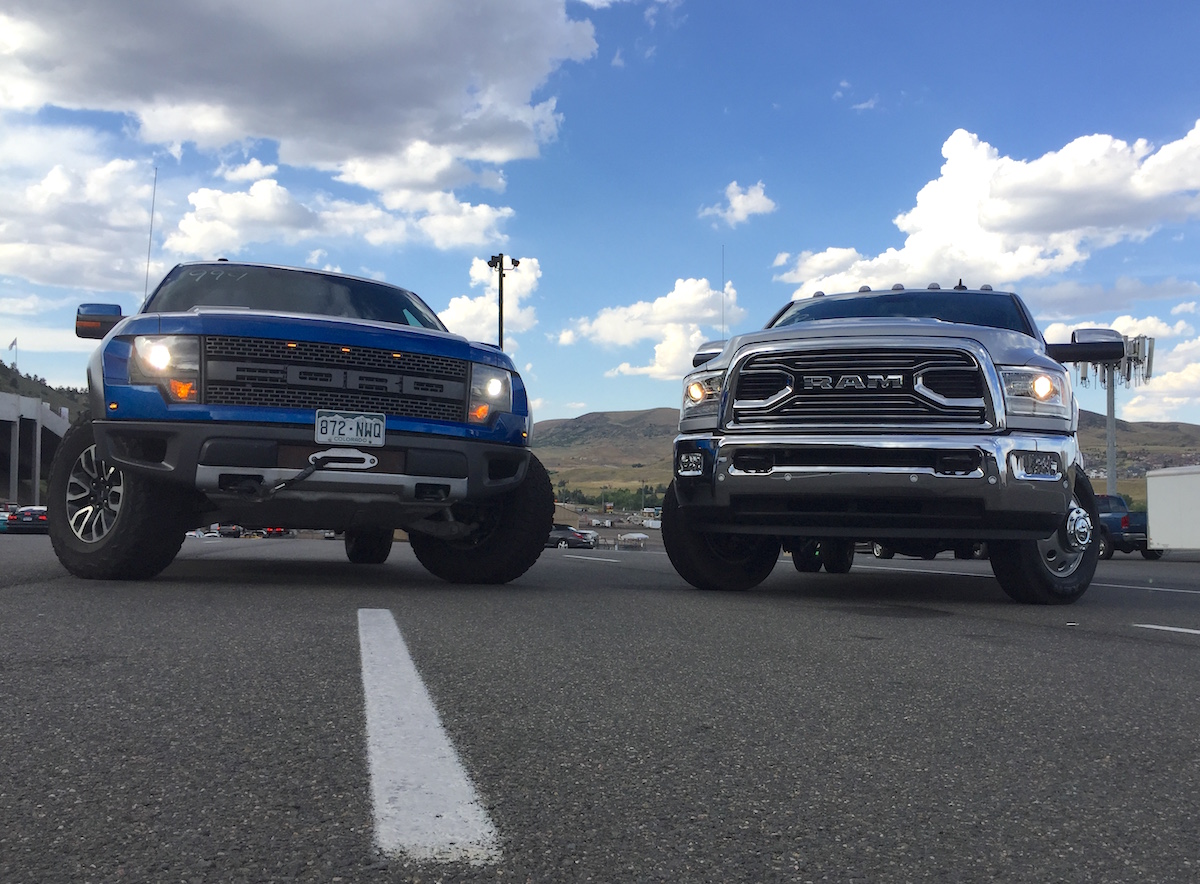
We recently received the following question at ask@tfltruck.com – “Which truck size is best for me (midsize or half-ton), and why are half-ton trucks called half-ton?” While this question is generic and does not specify any requirements, it is still a common thread of questioning that we get often. We also address the question about truck sizes (or classes) and the “half-ton” naming convention in our book Truck Nuts: TFLtruck’s Guide to Pickups
First, let’s go over the official classifications of all pickup trucks in the United States. There are a total of eight classes: from midsize to semi tractor trailers.
Class 1 (GVWR 0 – 6,000 Lbs)
Gross Vehicle Weight Rating (GVWR) is the total allowed weight rating of the truck and all people of cargo in it. This class covers the so-called “midsize” trucks such as the Chevy Colorado, Ford Ranger, GMC Canyon, Nissan Frontier, and Toyota Tacoma. What’s up with the “midsize” name? Logically, these trucks sizes are somewhere between the “mini” trucks of decades past and the “full-size” pickups of today.
These trucks have a typical payload capacity between 1,000 – 1,500 lbs, and they are rated to tow up to 7,700 lbs. As a rule of thumb, we recommend midsize trucks for towing a trailer that is narrower than 8-feet and weigh no more than 5,000 lbs. If you have a full-size trailer, then you need a full-size truck to tow it.
Class 2a (GVWR 6,001 – 8,500 Lbs)
This class represents the bulk of pickup truck sales in the United States. The Ford F-150 is just one of the trucks in this weight class. There are also the Chevy Silverado 1500, GMC Sierra 1500, Nissan Titan 1500, Ram 1500, and Toyota Tundra. These trucks are also referred to as “half-tons”. What’s the deal with the half-ton name and the “1500” or “150” designation. The naming conventions are rooted in history and marketing jargon.
Popular truck from many decades ago indeed had a maximum payload of half a ton (or about 1,000 lbs). More recently, the typical payload ratings for this class have risen to between 1,200 – 2,000 lbs. However, the half-ton name stuck.
We recommend the “half-ton” full-size trucks for towing a trailer that weighs in the range of 7,000 – 9,000 lbs. Yes, we know that these trucks have maximum ratings that reach far higher, but our real world testing is where we validate our recommendations.
Class 2b (GVWR 8,501 – 10,000 Lbs)
Aha, now we are generally speaking about the “3/4 ton trucks”. Once again, that is a legacy naming convention. Trucks in this class include the Chevy Silverado 2500, Ford F-250, GMC Sierra 2500, Nissan Titan XD, and Ram 2500. These trucks are also referred to as heavy duty pickups.
The typical payload rating for this first heavy duty class is between 2,000 – 3,500 lbs. These trucks can be had with big gas or diesel V8s, and you can actually push their manufacturer maximum towing ratings all the way to 18,500 lbs (depending on configuration).
Class 3 (GVWR 10,001 – 14,000 Lbs)
These are the big boys, also known as “one ton trucks”. These include the Silverado 3500, Ford F-350, Sierra 3500, and Ram 3500 with single or dual rear wheels. The duallies have a typical payload between 5,000 – 6,500 lbs, and these can be rated to tow over 30,000 lbs of trailer (5th wheel or gooseneck). It is very easy to load these trucks to over 26,000 lbs Gross Combined Weight Rating (GCWR), which means you need a Commercial Driver’s License (CDL) to drive them.
There are also class 4, 5, 6, 7, and 8 trucks out there.
The most common Class 4 and 5 trucks are very familiar Ford, GM, and Ram trucks and chassis cabs. GVWR ratings go up to 19,500 lbs for Class 5. These trucks are also often referred to as “medium duty”. This primarily allows the truck to carry more payload weight, not tow more than Class 3 trucks.
Class 6 and 7 trucks take the GVWR rating up further to 33,000 lbs for class 7. These are generally commercial use trucks.
Finally, class 8 trucks are the “semi trucks” and severe duty big rigs. Anything over a GVWR of 33,000 lbs is in this class. GCWR for these trucks typically sits at 80,000 lbs, but certain application may weigh more with special permits.
Here is a continued discussion that relates to the different truck classes and hitch types and weight ratings.
















![Which is More Reliable: 3.5L EcoBoost or 5.0L V8? [Reader Question] Second-generation 3.5-liter EcoBoost engine](https://tfltruck.com/wp-content/uploads/2016/05/Second-generation-35-liter-EcoBoost-engine.jpg)
![Which Silverado Engine to Get: 5.3L or 6.2L V8? [Ask TFLTruck] 2016 chevy silverado](https://tfltruck.com/wp-content/uploads/2015/10/2016-chevy-silverado-grille.jpg)
